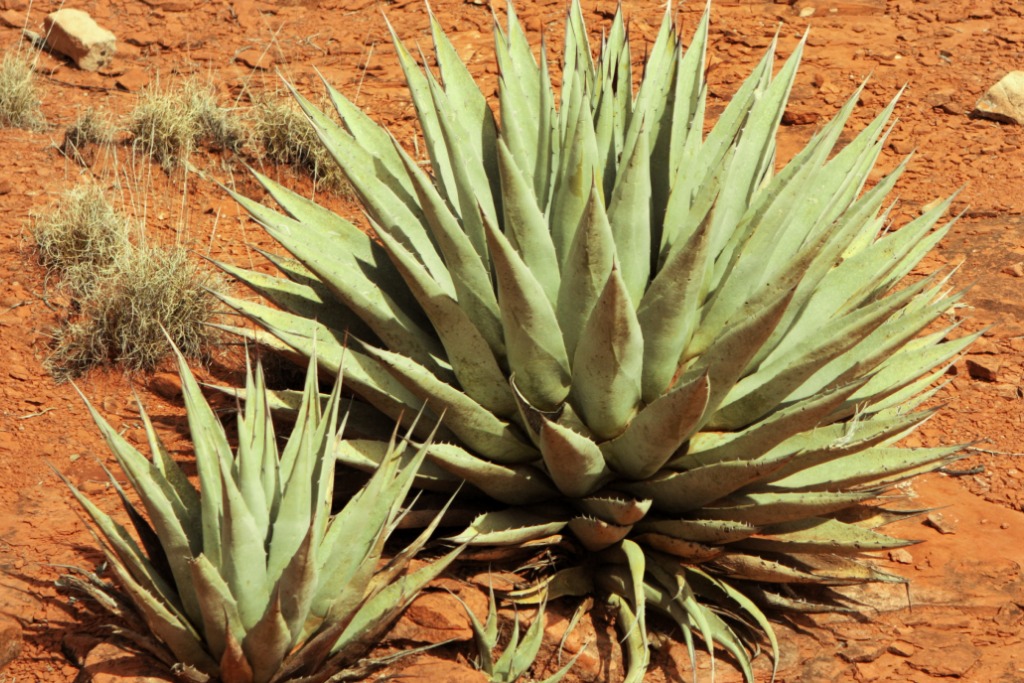Desert Agave
(Agave deserti)

Description
Agave deserti (desert agave, mescal, century plant or maguey) is an agave native to desert regions in southern California, Arizona, and Baja California. Its tall yellow flower stalks dot dry rocky slopes and washes throughout the spring. It forms a rosette of fleshy gray-green leaves 20–70 cm long and 4.5–10 cm broad, with sharp spines along the edges and at the tips. It flowers at maturity (20 to 40 years), sending up an inflorescence 2–6 m tall. The panicle bears numerous yellow, funnel-shaped flowers 3–6 cm long. The desert agave is drought-tolerant but requires good drainage. The desert dwelling Native Americans used fibers from the leaves to make cloth, bowstrings, and rope. Young flower stalks (roasted), buds, and hearts of plants (also roasted) were eaten. Natives of southern California commonly harvested the "heads" using a specialized digging stick and roasted the leaves and heart alike. Food thus obtained often became a dietary staple, even into drought years. Alcoholic drinks were also manufactured from the sweet juices of this and other agaves. Agave is a genus of monocots native to the hot and arid regions of the Americas, although some Agave species are also native to tropical areas of South America. The genus Agave (from the Ancient Greek αγαυή, agauê) is primarily known for its succulent and xerophytic species that typically form large rosettes of strong, fleshy leaves. Agave now includes species formerly placed in a number of other genera, such as Manfreda, ×Mangave, Polianthes and Prochnyanthes. Many plants in this genus may be considered perennial, because they require several to many years to mature and flower. However, most Agave species are more accurately described as monocarpic rosettes or multiannuals, since each individual rosette flowers only once and then dies; a small number of Agave species are polycarpic. Maguey flowers are considered edible in many indigenous culinary traditions of Mesoamerica. Along with plants from the closely related genera Yucca, Hesperoyucca, and Hesperaloe, various Agave species are popular ornamental plants in hot, dry climates, as they require very little supplemental water to survive. Most Agave species grow very slowly. Some Agave species are known by the common name "century plant".
Taxonomic tree:







